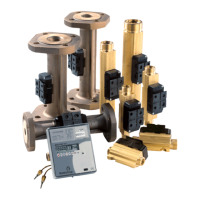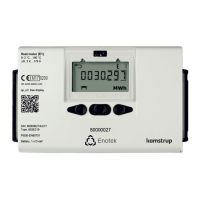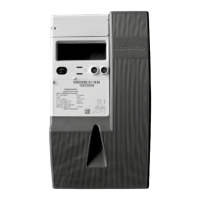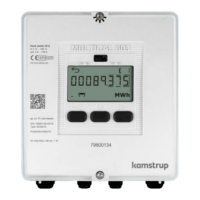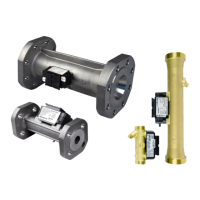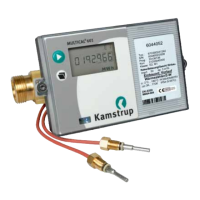TECHNICAL DESCRIPTION flowIQ® 3100
44 Kastup A/S • Tehial Desiptio • 5512-1242_D_GB • 09.2016
11 Measuring principle
11.1 Ultrasound with piezo ceramics
Flow sensor manufacturers have been working on alternative techniques to replace the mechanical principle.
Research and development at Kamstrup has proven that ultrasonic measuring is the most viable solution.
Based on microprocessor technology and piezo ceramics, ultrasonic measuring is not only accurate but also
reliable.
11.2 Principles
The thickness of a piezo ceramic element changes when exposed to an electric field (voltage). When the
element is mechanically affected, a corresponding electric charge is generated. Therefore, the piezo ceramic
element can function as both sender and receiver.
Within ultrasonic flow measuring there are two main principles: the transit time method and the Doppler
method.
The Doppler method is based on the frequency change which occurs when sound is reflected by a moving
particle. This is very similar to the effect you experience when a car drives by. The sound (the frequency)
decreases when the car passes by.
11.3 Transit time method
The transit time method used in flowIQ® 3100 utilizes the fact that it takes an ultrasonic signal sent in the
opposite direction of the flow longer to travel from sender to receiver than a signal sent in the same direction
as the flow.
The transit time difference in a flow sensor is very small (nanoseconds). Therefore, the time difference is
measured as a phase difference between the two 1 MHz sound signals in order to obtain the necessary
accuracy.
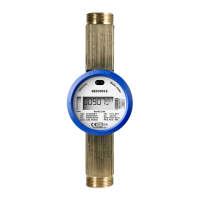
